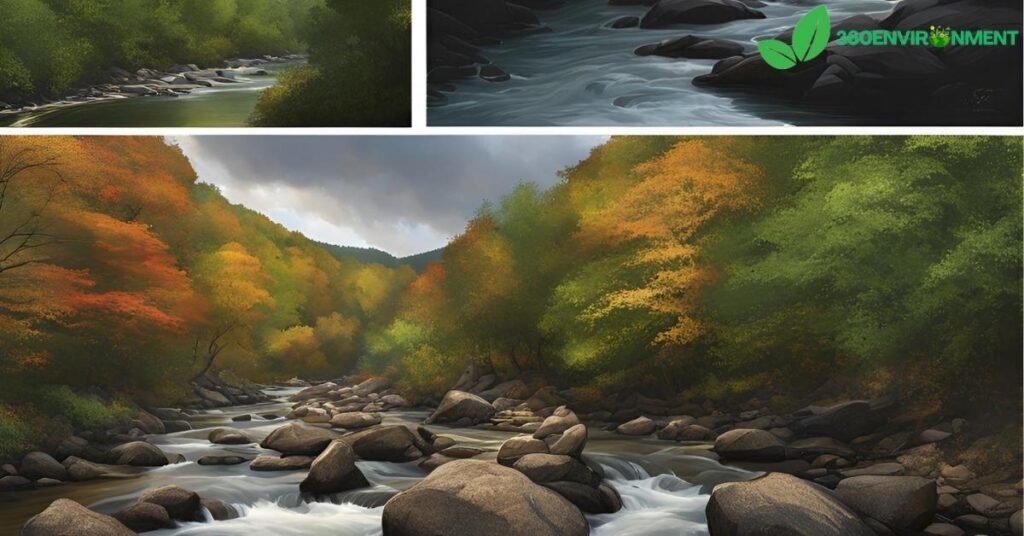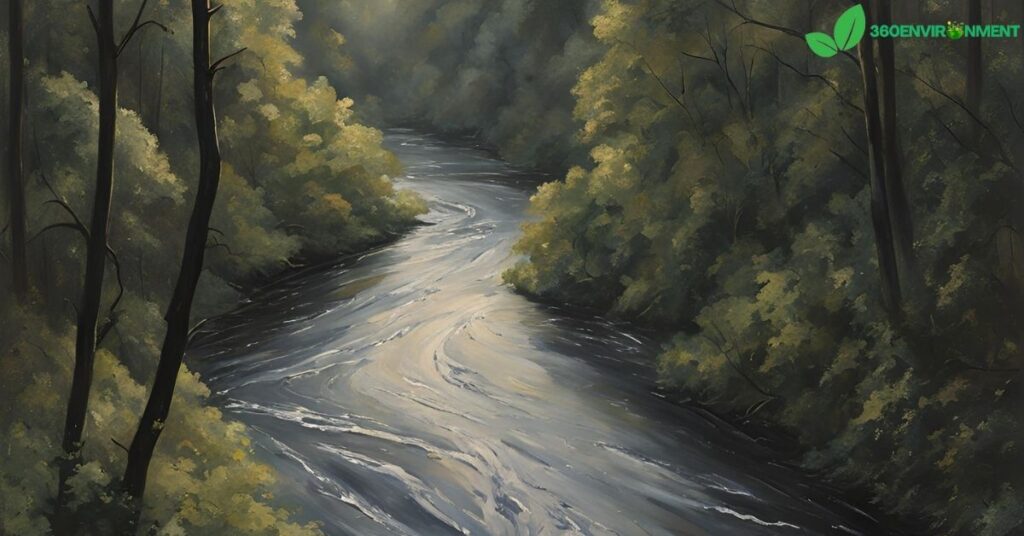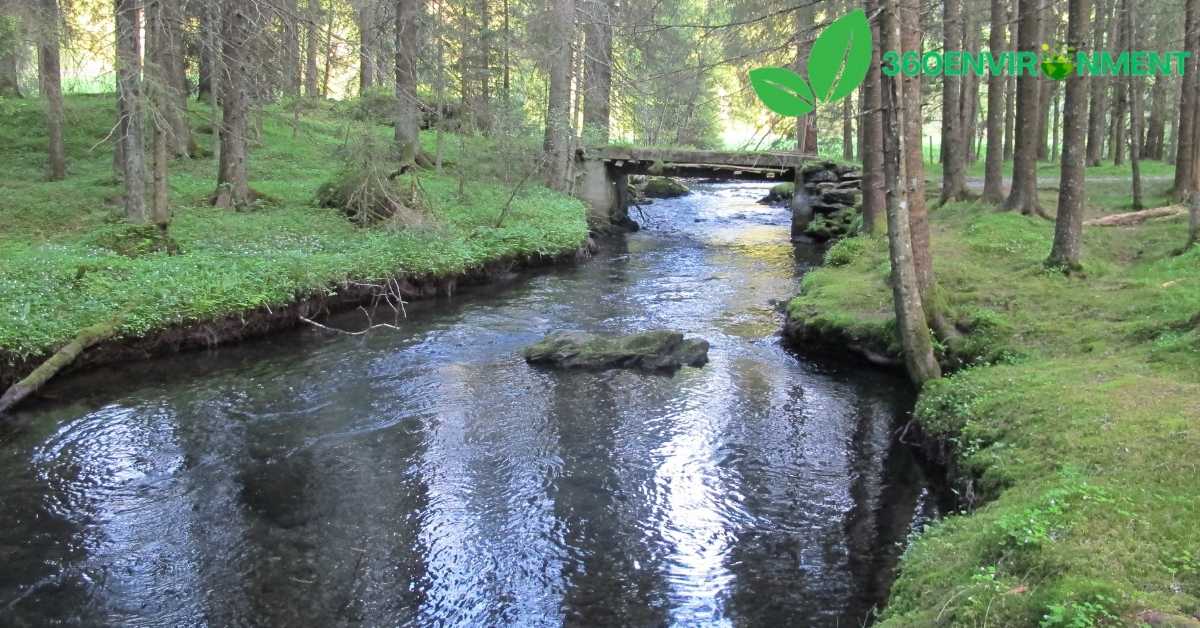Waterways have always been central to the ecosystems they run through, shaping the geography, sustaining life, and supporting human development. One such important river system is Blackriver, a term that might refer to various rivers worldwide, each holding significant ecological and cultural importance. This article focuses on the environmental aspects of Blackriver, exploring its role in sustaining biodiversity, its historical relevance, and the contemporary challenges it faces due to human activity and climate change.
We will explore the environmental significance of Blackriver, focusing on its role in water ecosystems, its interactions with surrounding terrestrial environments, and how human activity impacts it. Whether we look at a specific Blackriver in the U.S., Canada, Africa, or elsewhere, these rivers share certain fundamental qualities, making them key components of their respective regions’ environmental landscapes.
1. What is Blackriver?
The name Blackriver is commonly used for rivers across the globe, from North America to Africa, and often refers to rivers that are stained dark due to the high levels of tannins and organic materials in their waters. These rivers usually flow through forested areas, where decaying leaves, bark, and other plant matter wash into the water. The resulting color gives the river a distinctive black or brown hue.

1.1. Characteristics of Blackwater Rivers
A blackwater river typically refers to a slow-moving river with waters that appear dark due to high concentrations of dissolved organic matter. Unlike muddy or sediment-heavy rivers, blackwater rivers have clear water but with a dark, tea-like color. This phenomenon occurs because tannins and other chemicals released from decaying plant matter stain the water without making it cloudy.
Key characteristics of blackwater rivers like Blackriver include:
- Low nutrient content: These rivers tend to have low levels of dissolved nutrients, as the tannins bind nutrients, making them less available to organisms.
- High acidity: The organic matter can make the water more acidic, which affects the types of plants and animals that can survive there.
- Slow water flow: Blackwater rivers are often associated with flat, lowland areas where water moves slowly, allowing organic matter to accumulate and stain the water.
2. The Ecological Importance of Blackriver
The Blackriver plays a crucial role in supporting the ecosystems through which it flows. From providing freshwater habitats to supporting terrestrial ecosystems, the river’s presence is vital for a variety of species, both aquatic and land-based. Blackwater rivers are typically home to unique biodiversity, adapted to the specific conditions these environments present.

2.1. Freshwater Ecosystems
Freshwater ecosystems are some of the most diverse environments on Earth. Blackriver supports a range of aquatic species, including fish, amphibians, reptiles, and invertebrates. These species have adapted to the low-nutrient, high-acidity environment that blackwater rivers create.
Common species found in blackwater rivers include:
- Fish: Many species of fish, such as catfish, cichlids, and piranhas (in regions like the Amazon), thrive in blackwater rivers due to the stable water conditions and the availability of shelter provided by submerged plants and fallen trees.
- Amphibians: Frogs and salamanders are abundant in blackwater rivers, often relying on the wetland areas surrounding these rivers for breeding and feeding.
- Invertebrates: Blackwater rivers are home to numerous insect species, including dragonflies, mayflies, and various larvae that form the base of the aquatic food web.
2.2. Terrestrial Ecosystems and Wetlands
The presence of Blackriver also supports the surrounding terrestrial ecosystems. Wetlands, forests, and floodplains associated with blackwater rivers are often rich in biodiversity, providing critical habitats for birds, mammals, and reptiles. Wetlands, in particular, play an essential role in maintaining water quality, regulating floods, and acting as carbon sinks.
Some key environmental services provided by the Blackriver ecosystem include:
- Habitat for wildlife: Wetland areas near Blackriver are home to waterfowl, migratory birds, and various mammals, such as otters and beavers, which rely on the river for food and shelter.
- Water filtration: Wetlands help filter pollutants from the water, improving water quality downstream. As the water moves through marshes and swamps, plants and microorganisms break down pollutants, reducing their impact on the wider environment.
- Flood control: The slow flow of blackwater rivers and the presence of surrounding wetlands help regulate water levels, reducing the risk of floods during heavy rainfall or snowmelt.
2.3. Plant Adaptations in Blackriver Ecosystems
Plants that grow in and around Blackriver have adapted to the unique conditions of blackwater environments. These adaptations include tolerance to acidic water, low nutrient levels, and periodic flooding. Common plant species found along blackwater rivers include:
- Cypress trees: Known for their ability to thrive in wet, swampy conditions, cypress trees are common along blackwater rivers in the southeastern United States. Their distinctive “knees” (root projections) help them survive in flooded areas.
- Aquatic plants: Submerged and floating plants, such as water lilies and bladderworts, are adapted to the slow-moving waters of blackwater rivers.
- Carnivorous plants: Due to the low nutrient levels in blackwater rivers, some plants, like pitcher plants and sundews, have evolved to supplement their diets by trapping and digesting insects.
3. Human Impacts on Blackriver Ecosystems
Like many waterways around the world, Blackriver faces a range of threats from human activities. Deforestation, agricultural runoff, industrial pollution, and climate change all pose significant risks to the health of blackwater rivers and the ecosystems they support.

3.1. Deforestation and Habitat Destruction
One of the most significant threats to blackwater rivers is deforestation. In many parts of the world, forests are cleared for agriculture, logging, and urban development. This has a direct impact on blackwater rivers like Blackriver by:
- Reducing the amount of organic matter: When forests are removed, the amount of decaying plant material that enters the river decreases, which can alter the water chemistry and affect the species that rely on it.
- Increasing erosion: Without the roots of trees and other vegetation to hold the soil in place, deforestation can lead to increased erosion, which introduces sediment into the river. This can smother aquatic habitats, reducing biodiversity and harming water quality.
- Loss of biodiversity: The destruction of forested areas near blackwater rivers results in the loss of habitat for many species, including amphibians, birds, and mammals, which depend on the river’s ecosystem for survival.
3.2. Pollution and Agricultural Runoff
Pollution is another major issue affecting Blackriver. Agricultural runoff, industrial waste, and urban pollution can all introduce harmful substances into the water, degrading its quality and threatening aquatic life.
- Nutrient pollution: Fertilizers used in agriculture often contain high levels of nitrogen and phosphorus, which can runoff into blackwater rivers during rainstorms. While blackwater rivers are naturally low in nutrients, the introduction of excess nutrients can lead to algal blooms, which deplete oxygen levels and harm fish and other aquatic species.
- Chemical pollution: Pesticides, herbicides, and industrial chemicals can also enter blackwater rivers, poisoning fish and invertebrates and disrupting the food web. Over time, these pollutants can accumulate in the ecosystem, leading to long-term damage to biodiversity and water quality.
3.3. Climate Change
Climate change poses a significant long-term threat to blackwater rivers like Blackriver. Rising temperatures, changing precipitation patterns, and more frequent extreme weather events are all expected to impact the health of blackwater ecosystems.
- Increased evaporation: Higher temperatures can increase the rate of evaporation in blackwater rivers, reducing water levels and concentrating pollutants in the water. This can make conditions even more challenging for aquatic species, particularly those already adapted to low-nutrient environments.
- Changes in rainfall patterns: Climate change is expected to bring more frequent and intense storms to many regions, leading to increased runoff, erosion, and flooding. These changes can disrupt the delicate balance of blackwater ecosystems, making it harder for plants and animals to survive.
- Shifts in species distribution: As temperatures rise, some species may be forced to migrate to cooler areas, altering the composition of ecosystems around blackwater rivers. This could lead to the loss of specialized species that are unable to adapt to the changing conditions.
4. Conservation Efforts and the Future of Blackriver
Given the importance of blackwater rivers to both local ecosystems and global biodiversity, it is crucial that steps are taken to protect and preserve them. Efforts to conserve Blackriver and other blackwater ecosystems typically focus on habitat protection, pollution reduction, and sustainable land-use practices.

4.1. Protecting Wetlands and Forests
One of the most effective ways to protect blackwater rivers like Blackriver is to conserve the surrounding wetlands and forests. By maintaining these ecosystems, we can help preserve the natural processes that support blackwater rivers and the species that rely on them.
Conservation efforts include:
- Establishing protected areas: National parks, wildlife refuges, and nature reserves are essential tools for conserving blackwater rivers and their surrounding ecosystems. By setting aside areas where human activities are limited, we can help protect critical habitats for plants, animals, and aquatic species.
- Reforestation and habitat restoration: In areas where forests have been cleared or wetlands have been drained, reforestation and habitat restoration projects can help restore the health of blackwater rivers. Planting native trees and restoring natural water flows can improve water quality, increase biodiversity, and reduce erosion.
4.2. Reducing Pollution
Efforts to reduce pollution are also crucial for the health of blackwater rivers. This includes measures to limit agricultural runoff, reduce industrial pollution, and improve waste management practices.
- Sustainable agriculture: Encouraging farmers to adopt more sustainable practices, such as reducing the use of chemical fertilizers and pesticides, can help prevent harmful substances from entering blackwater rivers. Buffer zones of vegetation along riverbanks can also help filter out pollutants before they reach the water.
- Regulating industrial emissions: Stronger regulations on industrial emissions and wastewater treatment can reduce the amount of harmful chemicals that enter blackwater rivers. Encouraging industries to adopt cleaner technologies and reduce waste production is essential for protecting water quality.
5. Blackriver and Its Role in Local Communities
In addition to its environmental importance, Blackriver also plays a crucial role in the lives of local communities. Many people depend on blackwater rivers for their livelihoods, whether through fishing, agriculture, or tourism.

5.1. Fishing and Aquaculture
Fishing is one of the most important economic activities associated with blackwater rivers. Many species of fish, including catfish and other commercially valuable species, thrive in blackwater rivers like Blackriver. Sustainable fishing practices are essential to ensure that fish populations remain healthy and that the river’s ecosystems continue to function properly.
In some regions, blackwater rivers also support aquaculture operations, where fish and other aquatic species are farmed for food. However, these operations must be carefully managed to prevent pollution and habitat degradation.
5.2. Tourism and Recreation
Blackwater rivers often attract tourists and nature enthusiasts, who come to explore the unique ecosystems and enjoy outdoor activities such as boating, birdwatching, and hiking. Blackriver may be a popular destination for ecotourism, with visitors drawn to its scenic beauty and the opportunity to observe rare wildlife.
Ecotourism can provide valuable income for local communities while promoting conservation efforts. However, it is essential to manage tourism activities in a way that minimizes their impact on the environment, such as limiting the number of visitors, providing education on responsible behavior, and maintaining infrastructure like trails and campsites.
Conclusion: The Significance of Blackriver
The Blackriver and other blackwater rivers around the world are vital components of their ecosystems, supporting a rich diversity of life and providing essential services such as water filtration, flood control, and carbon storage. However, these ecosystems are also vulnerable to a range of threats, including deforestation, pollution, and climate change.
Conservation efforts to protect blackwater rivers like Blackriver must focus on preserving natural habitats, reducing pollution, and promoting sustainable land-use practices. By understanding the ecological importance of these rivers and taking action to protect them, we can help ensure that they continue to provide benefits to both nature and local communities for generations to come.
FAQs
- What is a blackwater river?
A blackwater river is a river with dark, tea-colored water caused by the presence of dissolved organic matter, such as tannins from decaying plant material. - Why are blackwater rivers important for biodiversity?
Blackwater rivers support unique ecosystems, providing habitats for a wide range of plant and animal species that are adapted to their acidic, low-nutrient waters. - What are the major threats to Blackriver?
Major threats to Blackriver include deforestation, agricultural runoff, industrial pollution, and climate change, all of which can degrade water quality and harm biodiversity. - How can we protect blackwater rivers like Blackriver?
Protecting blackwater rivers requires conserving wetlands and forests, reducing pollution, and promoting sustainable land-use practices. - What role do blackwater rivers play in local communities?
Blackwater rivers provide valuable resources for local communities, including fishing, agriculture, and ecotourism, while also supporting vital ecosystem services. - How does climate change affect blackwater rivers?
Climate change can lead to increased evaporation, altered rainfall patterns, and shifts in species distribution, all of which can disrupt the delicate balance of blackwater ecosystems.
Read More: Are Streams and Lakes in Alaska Fresh or Saltwater? An Exploration of Alaska’s Water Bodies

